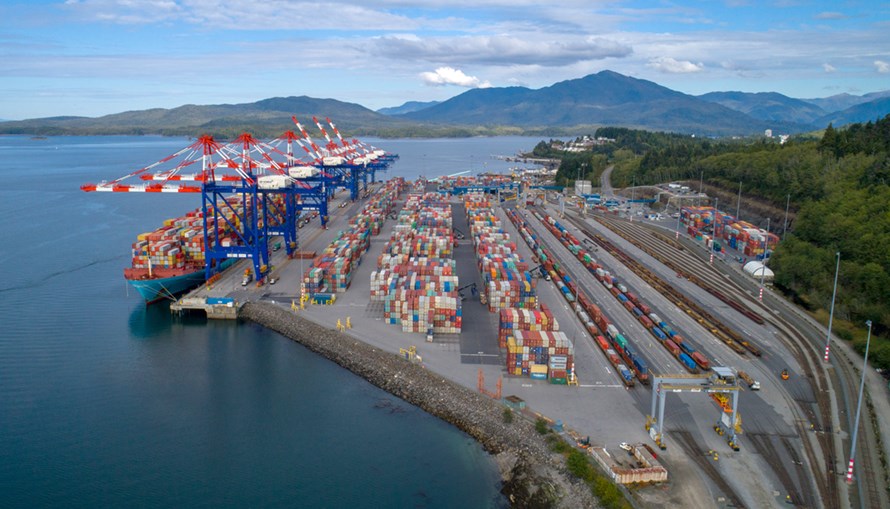Continued development of the Port of Prince Rupert received a financial injection from Ottawa September 5 with the announcement of $153.75 million in funding for three projects.
“We see it as indicative of the growing role that the Port of Prince Rupert plays in adding value to Canadian supply chains and growing Canada’s trade with the world,” Prince Rupert Port Authority president Shaun Stevenson said. “These investments will enable the development of gateway infrastructure that will support ongoing growth in capacity and resiliency of the gateway.”
The port’s activity is expected to grow to over 50 million tonnes of trade annually within the next decade.
“These projects are a springboard to unlocking future private sector investment in the new facilities and operations required to meet that growing demand,” the port said in a statement.
In partnership with CN (TSX:CNR), the port received $60.6 million for the $122 million Zanardi Bridge and Causeway project designed to reduce port operational conflicts and increase rail capacity with a view to accommodating future growth in import and export trade for current and future terminals.
Key project components include construction of a new double-track bridge across the Zanardi Rapids, rehabilitation of the existing single track Zanardi Bridge and expansion of the causeway between the Zanardi Bridge and Ridley Island.
The port itself received $49.85 million toward rail infrastructure required to service the $100 million Ridley Island Export Logistics Platform project focused on expanding of the existing road, rail and utility corridor for greater train access.
The rail infrastructure is a precursor to a large-scale bulk transload and breakbulk transload facilities, and an integrated off-dock container yard.
The port hopes the corridor expansion will attract private-sector investment in export transloading and warehouse capacity at the port. A full build-out of logistics capability will be able to handle a significant increase in volumes, including dry bulk, forest products and other commodities.
The Metlakatla Development Corp., the economic development arm of the Metlakatla First Nation, received $43.3 million toward the $89 million Metlakatla Import Logistics Park project, a 25-hectare site development on South Kaien Island to enable transload and warehouse operations to provide increased flexibility and value-added capabilities for import supply chains.
“This project will benefit all who live in Coast Tsimshian territory by creating new jobs related to both the construction and long-term operations of the facility,” said corporation CEO Harold Leighton.
The funds are drawn from the National Trade Corridors Fund.
Prince Rupert’s cargo capacity generally has continued to grow. It jumped 12 per cent, four times Vancouver’s three per cent increase, to 1,036,009 20-foot equivalent units last year from 926,539 in 2017.
All other Prince Rupert terminals combined realized a 10% increase, with 26.67 million metric tonnes (MMT) moved compared with 24.17 MMT in 2017.
Prince Rupert Grain Ltd., which handles barley, canola, oats, soybeans and wheat, saw a 6% cargo decline from 5.77 MMT in 2017 to 5.44 MMT in 2018. Coke and coal traffic jumped 21 per cent to 9.12 MMT from 7.56.
Prince Rupert plans to increase annual TEU throughput capacity to 1.8 million by 2022 from 1.3 million. The port moved past the one-million-container-per-year mark December 18.
Prince Rupert’s potential terminal traffic received a boost March 27 when the world’s 11th-largest container carrier, ZIM Integrated Shipping Services, announced it had partnered with the 2M Alliance vessel-sharing agreement and added Prince Rupert to its North American trade loop.



